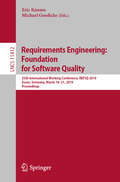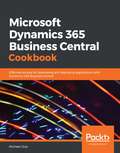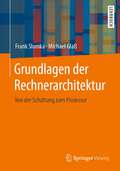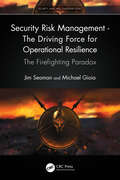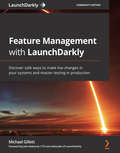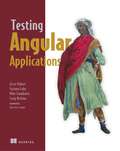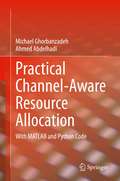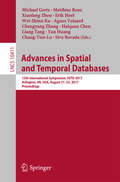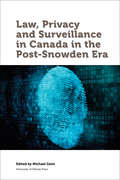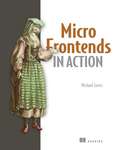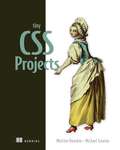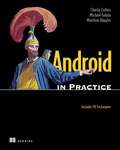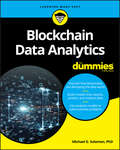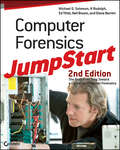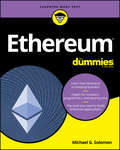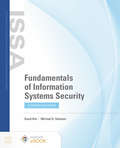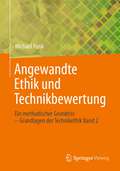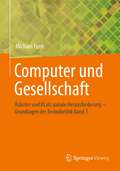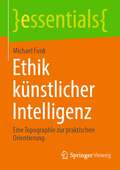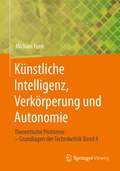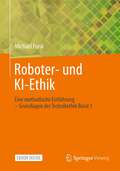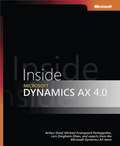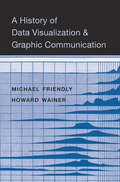- Table View
- List View
Requirements Engineering: 25th International Working Conference, REFSQ 2019, Essen, Germany, March 18–21, 2019, Proceedings (Lecture Notes in Computer Science #11412)
by Eric Knauss Michael GoedickeThis book constitutes the proceedings of the 25th International Working Conference on Requirements Engineering - Foundation for Software Quality, REFSQ 2019, held in Essen, Germany, in March 2019. The 13 full papers and 9 short papers in this volume were carefully reviewed and selected from 66 submissions. The papers were organized in topical sections named: Automated Analysis; Making Sense of Requirements; Tracelink Quality; Requirements Management (Research Previews); From Vision to Specification; Automated Analysis (Research Previews); Requirements Monitoring; Open Source; Managing Requirements Knowledge at a Large Scale; in Situ/Walkthroughs (Research previews).
Microsoft Dynamics 365 Business Central Cookbook: Effective recipes for developing and deploying applications with Dynamics 365 Business Central
by Michael GlueGain useful insights to help you efficiently build, test, and migrate customized solutions on Business Central cloud and on-premise platforms Key Features Explore enhanced functionalities and development best practices in Business Central Develop powerful Business Central projects using the AL language Master the new Business Central with easy-to-follow recipes Book Description Microsoft Dynamics 365 Business Central is a complete business management solution that can help you streamline business processes, connect individual departments in your company, and enhance customer interactions. Ok. That first part was really professional sounding, right? Now, let's get into what this cookbook is going to do for you: put simply, it's going to help you get things done. This book will help you get to grips with the latest development features and tools for building applications using Business Central. You'll find recipes that will guide you in developing and testing applications that can be deployed to the cloud or on-premises. For the old-schoolers out there, you'll also learn how to take your existing Dynamics NAV customizations and move them to the new AL language platform. Also, if you haven't figured it out already, we're going to be using very normal language throughout the book to keep things light. After all, developing applications is fun, so why not have fun learning as well! What you will learn Build and deploy Business Central applications Use the cloud or local sandbox for application development Customize and extend your base Business Central application Create external applications that connect to Business Central Create automated tests and debug your applications Connect to external web services from Business Central Who this book is for This book is for Dynamics developers and administrators who want to become efficient in developing and deploying applications in Business Central. Basic knowledge and understanding of Dynamics application development and administration is assumed.
Grundlagen der Rechnerarchitektur: Von der Schaltung zum Prozessor
by Michael Glaß Frank SlomkaDas Buch führt in die Grundlagen der technischen Informatik ein und richtet sich generell an Studierende der MINT-Fächer in den ersten Semestern. Ausgehend von den mathematischen Grundlagen zur Beschreibung und Berechnung logischer Schaltungen wird der komplette Entwurf digitaler Rechenmaschinen beschrieben. Aufbauend auf der Halbleitertechnik und deren Schaltungen führt das Buch in die Grundbegriffe der Rechnerarchitektur anhand einfacher und selbst aufbaubarer Beispiele ein.
Educational Psychology and the Internet
by Michael GlassmanThe first comprehensive, research-based textbook on Internet-infused education, Educational Psychology and the Internet offers students an accessible guide to important issues in the field. Michael Glassman begins with an overview of the history that traces the evolution of the Internet and its significance for education. He outlines the current state of research, clearly defining terms that students will need to discuss larger concepts, such as hypertext and cyberspace. The second part of the book explores the practical applications of this research, which range from the individual-oriented to the generalized, including massive open online courses (MOOCs), open educational resources, and augmented reality. Key issues that affect teachers and students today, such as Net Neutrality and Creative Commons and Open Source licenses, are explained in straightforward terms, and often-overlooked differences - for example, between course management systems and learning management systems, and between blogs, social networking sites, and short messaging systems - are highlighted.
Security Risk Management - The Driving Force for Operational Resilience: The Firefighting Paradox (Security, Audit and Leadership Series)
by Jim Seaman Michael GioiaThe importance of businesses being ‘operationally resilient’ is becoming increasingly important, and a driving force behind whether an organization can ensure that its valuable business operations can ‘bounce back’ from or manage to evade impactful occurrences is its security risk management capabilities. In this book, we change the perspective on an organization’s operational resilience capabilities so that it shifts from being a reactive (tick box) approach to being proactive. The perspectives of every chapter in this book focus on risk profiles and how your business can reduce these profiles using effective mitigation measures. The book is divided into two sections: 1. Security Risk Management (SRM). All the components of security risk management contribute to your organization’s operational resilience capabilities, to help reduce your risks. • Reduce the probability/ likelihood. 2. Survive to Operate. If your SRM capabilities fail your organization, these are the components that are needed to allow you to quickly ‘bounce back.’ • Reduce the severity/ impact. Rather than looking at this from an operational resilience compliance capabilities aspect, we have written these to be agnostic of any specific operational resilience framework (e.g., CERT RMM, ISO 22316, SP 800- 160 Vol. 2 Rev. 1, etc.), with the idea of looking at operational resilience through a risk management lens instead. This book is not intended to replace these numerous operational resilience standards/ frameworks but, rather, has been designed to complement them by getting you to appreciate their value in helping to identify and mitigate your operational resilience risks. Unlike the cybersecurity or information security domains, operational resilience looks at risks from a business-oriented view, so that anything that might disrupt your essential business operations are risk-assessed and appropriate countermeasures identified and applied. Consequently, this book is not limited to cyberattacks or the loss of sensitive data but, instead, looks at things from a holistic business-based perspective.
Feature Management with LaunchDarkly: Discover safe ways to make live changes in your systems and master testing in production
by Michael Gillett John KodumalMake code deployments completely safe and change your application in production in real time with LaunchDarkly using percentage-based rollouts, kill switches, and A/B and multi-variant testingKey FeaturesLearn how to work with LaunchDarkly to turn features on and off within your production applicationsExplore the ways in which feature management can change how software is built and how teams workMaster every aspect of LaunchDarkly's functionality to test in production and learn from your usersBook DescriptionOver the past few years, DevOps has become the de facto approach for designing, building, and delivering software. Feature management is now extending the DevOps methodology to allow applications to change on demand and run experiments to validate the success of new features. If you want to make feature management happen, LaunchDarkly is the tool for you. This book explains how feature management is key to building modern software systems. Starting with the basics of LaunchDarkly and configuring simple feature flags to turn features on and off, you'll learn how simple functionality can be applied in more powerful ways with percentage-based rollouts, experimentation, and switches. You'll see how feature management can change the way teams work and how large projects, including migrations, are planned. Finally, you'll discover various uses of every part of the tool to gain mastery of LaunchDarkly. This includes tips and tricks for experimentation, identifying groups and segments of users, and investigating and debugging issues with specific users and feature flag evaluations. By the end of the book, you'll have gained a comprehensive understanding of LaunchDarkly, along with knowledge of the adoption of trunk-based development workflows and methods, multi-variant testing, and managing infrastructure changes and migrations.What you will learnGet to grips with the basics of LaunchDarkly and feature flagsRoll out a feature to a percentage or group of usersFind out how to experiment with multi-variant and A/B testingDiscover how to adopt a trunk-based development workflowExplore methods to manage infrastructure changes and migrationsGain an in-depth understanding of all aspects of the LaunchDarkly toolWho this book is forThis book is for developers, quality assurance engineers and DevOps engineers. This includes individuals who want to decouple the deployment of code from the release of a feature, run experiments in production, or understand how to change processes to build and deploy software. Software engineers will also benefit from learning how feature management can be used to improve products and processes. A basic understanding of software is all that you need to get started with this book as it covers the basics before moving on to more advanced topics.
Testing Angular Applications
by Corinna Cohn Michael Giambalvo Jesse Palmer Craig NishinaSummaryTesting Angular Applications is an example-rich, hands-on guide that gives you the real-world techniques you need to thoroughly test all parts of your Angular applications. By the end of this book, you'll be able to confidently write unit and end-to-end tests for Angular applications in TypeScript.Foreword by Brad Green, Google.Purchase of the print book includes a free eBook in PDF, Kindle, and ePub formats from Manning Publications.About the TechnologyDon't leave the success of your mission-critical Angular apps to chance. Proper testing improves code quality, reduces maintenance costs, and rewards you with happy users. New tools and best practices can streamline and automate all aspects of testing web apps, both in development and in production. This book gets you started.About the BookTesting Angular Applications teaches you how to make testing an essential part of your development and production processes. You'll start by setting up a simple unit testing system as you learn the fundamental practices. Then, you'll fine-tune it as you discover the best tests for Angular components, directives, pipes, services, and routing. Finally, you'll explore end-to-end testing, mastering the Protractor framework, and inserting Angular apps into your continuous integration pipeline.What's insideGetting to know TypeScriptWriting and debugging unit testsWriting and debugging end-to-end tests with ProtractorBuilding continuous integration for your entire test suiteAbout the ReaderThis book is for readers with intermediate JavaScript skills.About the AuthorJesse Palmer is a senior engineering manager at Handshake. Corinna Cohn is a single-page web application specialist. Mike Giambalvo and Craig Nishina are engineers at Google.Table of ContentsIntroduction to testing Angular applicationsPART 1 - Unit testingCreating your first testsTesting componentsTesting directivesTesting pipesTesting servicesTesting the routerPART 2 - End-to-end testingGetting started with ProtractorUnderstanding timeoutsAdvanced Protractor topicsPART 3 - Continuous integrationContinuous integrationAppendix A - Setting up the sample projectAppendix B - Additional resources
Practical Channel-Aware Resource Allocation: With MATLAB and Python Code
by Ahmed Abdelhadi Michael GhorbanzadehThis book dives into radio resource allocation optimizations, a research area for wireless communications, in a pragmatic way and not only includes wireless channel conditions but also incorporates the channel in a simple and practical fashion via well-understood equations. Most importantly, the book presents a practical perspective by modeling channel conditions using terrain-aware propagation which narrows the gap between purely theoretical work and that of industry methods. The provided propagation modeling reflects industry grade scenarios for radio environment map and hence makes the channel based resource allocation presented in the book a field-grade view. Also, the book provides large scale simulations that account for realistic locations with terrain conditions that can produce realistic scenarios applicable in the field. Most portions of the book are accompanied with MATLAB code and occasionally MATLAB/Python/C code. The book is intended for graduate students, academics, researchers of resource allocation in mathematics, computer science, and electrical engineering departments as well as working professionals/engineers in wireless industry.
Advances in Spatial and Temporal Databases: 15th International Symposium, SSTD 2017, Arlington, VA, USA, August 21 – 23, 2017, Proceedings (Lecture Notes in Computer Science #10411)
by Michael Gertz, Matthias Renz, Xiaofang Zhou, Erik Hoel, Wei-Shinn Ku, Agnes Voisard, Chengyang Zhang, Haiquan Chen, Liang Tang, Yan Huang, Chang-Tien Lu and Siva RavadaThis book constitutes the refereed proceedings of the 15th International Symposium on Spatial and Temporal Databases, SSTD 2017, held in Arlington, VA, USA, in August 2017.The 19 full papers presented together with 8 demo papers and 5 vision papers were carefully reviewed and selected from 90 submissions. The papers are organized around the current research on concepts, tools, and techniques related to spatial and temporal databases.
Law, Privacy and Surveillance in Canada in the Post-Snowden Era (Law, Technology and Media)
by Michael GeistYears of surveillance-related leaks from US whistleblower Edward Snowden have fuelled an international debate on privacy, spying, and Internet surveillance. Much of the focus has centered on the role of the US National Security Agency, yet there is an important Canadian side to the story. The Communications Security Establishment, the Canadian counterpart to the NSA, has played an active role in surveillance activities both at home and abroad, raising a host of challenging legal and policy questions. With contributions by leading experts in the field, Law, Privacy and Surveillance in Canada in the Post-Snowden Era is the right book at the right time: From the effectiveness of accountability and oversight programs to the legal issues raised by metadata collection to the privacy challenges surrounding new technologies, this book explores current issues torn from the headlines with a uniquely Canadian perspective.
Micro Frontends in Action
by Michael GeersMicro Frontends in Action teaches you to apply the microservices approach to the frontend.Summary Browser-based software can quickly become complex and difficult to maintain, especially when it&’s implemented as a large single-page application. By adopting the micro frontends approach and designing your web apps as systems of features, you can deliver faster feature development, easier upgrades, and pick and choose the technology you use in your stack. Micro Frontends in Action is your guide to simplifying unwieldy frontends by composing them from small, well-defined units. Purchase of the print book includes a free eBook in PDF, Kindle, and ePub formats from Manning Publications. About the Technology Micro frontends deliver the same flexibility and maintainability to browser-based applications that microservices provide for backend systems. You design your project as a set of standalone components that include their own interfaces, logic, and storage. Then you develop these mini-applications independently and compose them in the browser. About the Book Micro Frontends in Action teaches you to apply the microservices approach to the frontend. You&’ll start with the core micro frontend design ideas. Then, you&’ll build an e-commerce application, working through practical issues like server-side and client-side composition, routing, and maintaining a consistent look and feel. Finally, you&’ll explore team workflow patterns that maximize the benefit of developing application components independently. What&’s Inside - Create a unified frontend from independent applications - Combine JavaScript code from multiple frameworks - Browser and server-side composition and routing - Implement effective dev teams and project workflow About the Reader For web developers, software architects, and team leaders. About the Author Michael Geers is a software developer specializing in building user interfaces. Table of Contents PART 1 - GETTING STARTED WITH MICRO FRONTENDS 1 What are micro frontends? 2 My first micro frontends project PART 2 - ROUTING, COMPOSITION, AND COMMUNICATION 3 Composition with Ajax and server-side routing 4 Server-side composition 5 Client-side composition 6 Communication patterns 7 Client-side routing and the application shell 8 Composition and universal rendering 9 Which architecture fits my project? PART 3 - HOW TO BE FAST, CONSISTENT, AND EFFECTIVE 10 Asset loading 11 Performance is key 12 User interface and design system 13 Teams and boundaries 14 Migration, local development, and testing
Tiny CSS Projects
by Martine Dowden Michael GearonCSS is a must-know language for all web developers. In this practical book, you&’ll explore numerous techniques to improve the way you write CSS as you build 12 tiny projects.In Tiny CSS Projects you&’ll build twelve exciting and useful web projects including: A loading screen created by styling SVG graphics A responsive newspaper layout with multiple columns Animating social media buttons with pseudo-elements Designing layouts using CSS grids Summary cards that utilize hover interactions Styling forms to make them more appealing to your users The projects may be tiny, but the CSS skills you&’ll learn are huge! Tiny CSS Projects teaches you how to make beautiful websites and applications by guiding you through a dozen fun coding challenges. You&’ll learn important skills through hands-on practice as you tinker with your own code and make real creative decisions about the projects you&’re building. You&’ll rapidly master the basics and then press on into CSS&’s exciting layout features including grid and flexbox, animations, transitions, and media queries. About the Technology Don&’t settle for boring web pages! With Cascading Style Sheets you can control color, layout, and typography to make your sites both functional and beautiful. CSS is a essential skill for web developers and designers. This book will help you get started the right way. About the Book Tiny CSS Projects builds your CSS skills by guiding you through 12 creative mini-projects. Each interesting challenge starts with a downloadable HTML skeleton. As you flesh it out with your own design ideas, you&’ll master CSS concepts like transitions, layout, and styling forms, and explore powerful features including Flexbox and Grid. All the skills you&’ll learn are easy to transfer to full-size applications. When you finish, you&’ll have an exciting portfolio of designs ready to go for your next project. What's Inside Transitions and animations using keyframes Layout techniques including Grid and Flexbox Styling form elements including radio buttons Embedding fonts and typography-related styles Conditional styling using pseudo-elements and media queries About the reader For readers who know the basics of HTML and frontend development. No previous experience with CSS is required. About the author Martine Dowden is an author, speaker, and award-winning CTO. Michael Gearon is a user experience designer and frontend developer who has worked with many well-known brands. Table of Contents 1 CSS introduction 2 Designing a layout using CSS Grid 3 Creating a responsive animated loading screen 4 Creating a responsive web newspaper layout 5 Summary cards with hover interactions 6 Creating a profile card 7 Harnessing the full power of float 8 Designing a checkout cart 9 Creating a virtual credit card 10 Styling forms 11 Animated social media share links 12 Using preprocessors
Android in Practice
by Charlie Collins Matthias Kaeppler Michael GalpinSummaryAndroid in Practice is a treasure trove of Android goodness, with over 90 tested, ready-to-use techniques including complete end-to-end example applications and practical tips for real world mobile application developers. Written by real world Android developers, this book addresses the trickiest questions raised in forums and mailing lists. Using an easy-to-follow problem/solution/discussion format, it dives into important topics not covered in other Android books, like advanced drawing and graphics, testing and instrumentation, building and deploying applications, and using alternative languages.About the BookIt's not hard to find the information you need to build your first Android app. Then what? If you want to build real apps, you will need some how-to advice, and that's what this book is about. Android in Practice is a rich source of Android tips, tricks, and best practices, covering over 90 clever and useful techniques that will make you a more effective Android developer. Techniques are presented in an easy-to-read problem/solution/discussion format. The book dives into important topics like multitasking and services, testing and instrumentation, building and deploying applications, and using alternative languages. Purchase of the print book comes with an offer of a free PDF, ePub, and Kindle eBook from Manning. Also available is all code from the book. What's InsideTechniques covering Android 1.x to 3.xAndroid for tabletsWorking with threads and concurrencyTesting and buildingUsing location awareness and GPSStyles and themesAnd much more!This book requires a working knowledge of Java, but no prior experience with Android is assumed. Source Code can be found at https://code.google.com/p/android-in-practice/Table of ContentsPART 1 BACKGROUND AND FUNDAMENTALSIntroducing AndroidAndroid application fundamentalsManaging lifecycle and statePART 2 REAL WORLD RECIPESGetting the pixels perfectManaging background tasks with ServicesThreads and concurrencyStoring data locallySharing data between appsHTTP networking and web servicesLocation is everythingAppeal to the senses using multimedia2D and 3D drawingPART 3 BEYOND STANDARD DEVELOPMENTTesting and instrumentationBuild managementDeveloping for Android tablets
Professional Alfresco
by David Caruana John Newton Michael Farman Michael G. Uzquiano Kevin RoastA timely and authoritative guide, written by the Chief Architect and Founder of Alfresco Alfresco is considered the leading open source solution for Web and Content Management. What makes Alfresco unique is its services, which can be easily extended with web scripts via RESTful services. Written by an author team that includes the chief architect and the founder of Alfresco, this comprehensive guide provides in-depth coverage of the Alfresco architecture and services and shows how to extend them through Web scripts to meet real business needs. You'll learn how to use Alfresco services to create effective content management solutions while detailed code examples show you how to extend Alfresco with Web scripts using RESTful services to deliver custom solutions. Features detailed, working code examples that demonstrate how to extend Alfresco with Web scripts Written by the Chief Architect and other key Alfresco insiders, ensuring that this book is both authoritative and up-to-date Shows how to integrate Alfresco with Drupal and Joomla portal solutions Covers the upcoming Alfresco 3. 2 release Includes real-world case examples of increasing levels of sophistication and complexity The companion Web site contains all source code examples in the book You'll benefit from this timely resource that shows how to get the most from Alfresco for specific business requirements.
Blockchain Data Analytics For Dummies
by Michael G. SolomonGet ahead of the curve—learn about big data on the blockchain Blockchain came to prominence as the disruptive technology that made cryptocurrencies work. Now, data pros are using blockchain technology for faster real-time analysis, better data security, and more accurate predictions. Blockchain Data Analytics For Dummies is your quick-start guide to harnessing the potential of blockchain. Inside this book, technologists, executives, and data managers will find information and inspiration to adopt blockchain as a big data tool. Blockchain expert Michael G. Solomon shares his insight on what the blockchain is and how this new tech is poised to disrupt data. Set your organization on the cutting edge of analytics, before your competitors get there! Learn how blockchain technologies work and how they can integrate with big data Discover the power and potential of blockchain analytics Establish data models and quickly mine for insights and results Create data visualizations from blockchain analysis Discover how blockchains are disrupting the data world with this exciting title in the trusted For Dummies line!
Computer Forensics JumpStart
by Michael G. SolomonEssential reading for launching a career in computer forensics Internet crime is on the rise, catapulting the need for computer forensics specialists. This new edition presents you with a completely updated overview of the basic skills that are required as a computer forensics professional. The author team of technology security veterans introduces the latest software and tools that exist and they review the available certifications in this growing segment of IT that can help take your career to a new level. A variety of real-world practices take you behind the scenes to look at the root causes of security attacks and provides you with a unique perspective as you launch a career in this fast-growing field. Explores the profession of computer forensics, which is more in demand than ever due to the rise of Internet crime Details the ways to conduct a computer forensics investigation Highlights tips and techniques for finding hidden data, capturing images, documenting your case, and presenting evidence in court as an expert witness Walks you through identifying, collecting, and preserving computer evidence Explains how to understand encryption and examine encryption files Computer Forensics JumpStart is the resource you need to launch a career in computer forensics.
Ethereum For Dummies
by Michael G. SolomonDive into a secure future Professionals look to Ethereum as a blockchain-based platform to develop safe applications and conduct secure transactions. It takes a knowledgeable guiding hand to understand how Ethereum works and what it does — and Ethereum For Dummies provides that guidance. Written by one of the leading voices in the blockchain community and best selling author of Blockchain For Dummies, this book demystifies the workings of Ethereum and shows how it can enhance security, transactions, and investments. As an emerging application of blockchain technology, Ethereum attracts a wide swath of professionals ranging from financial pros who see it as a way to enhance their business, security analysts who want to conduct secure transactions, programmers who build apps that employ the Ethereum blockchain, or investors interested in cashing in on the rise of cryptocurrency. Ethereum For Dummies offers a starting point to all members of this audience as it provides easy-to-understand explanation of the tools and techniques of using Ethereum. Understand the fundamentals of Ethereum Build smart contracts Create decentralized applications Examine public and private chains If you need to get a grip on one of the biggest applications of blockchain technology, this book makes it easier.
Fundamentals of Information Systems Security
by David Kim Michael G. SolomonFundamentals of Information Systems Security, Fourth Edition provides a comprehensive overview of the essential concepts readers must know as they pursue careers in information systems security.
Angewandte Ethik und Technikbewertung: Ein methodischer Grundriss – Grundlagen der Technikethik Band 2
by Michael FunkWie bilde ich mir ein ethisches Urteil, um Konflikten zu begegnen? Was ist Technik und wer ist verantwortlich, wenn sie versagt? Stehen Menschen noch im Mittelpunkt – obwohl oder gerade weil Maschinen immer „smarter“ werden? Fragen wie diese verlangen nach einer übersichtlichen und verständlichen Präsentation ethischer Methoden der Technikbewertung. Dabei rückt vorliegendes Buch die Auseinandersetzung mit den Folgen, Risiken und Nebeneffekten technischen Handelns in den Mittelpunkt. Diese reichen von ökologischen Fragen der Entsorgung über Zweckentfremdung bis hin zur individuellen und kollektiven Verantwortung von Ingenieur*innen. Aufbauend auf Grundlagen der angewandten Ethik wird in Bottom-up- und Top-down-Verfahren die Kasuistik sowie analogisch-vergleichende und logisch-ableitende Urteilsbildung eingeführt. Wesentliche Charakteristika technischen Handelns sowie Akteursrollen werden systematisch vorgestellt. Abbildungen, Beispiele und Aufgaben runden den verständlichen Aufbau ab. Als methodischer Grundriss richtet sich vorliegendes Buch an Ingenieurwissenschaftler*innen, Informatiker*innen und Geisteswissenschaftler*innen im Berufsalltag, aber auch an interessierte Lai*innen, die mehr über ethische Praxis erfahren wollen. Es bildet den zweiten, in sich abgerundeten Teil der Buchreihe Grundlagen der Technikethik.Haben wir die Technik, die wir brauchen, und brauchen wir die Technik, die wir haben?
Computer und Gesellschaft: Roboter und KI als soziale Herausforderung – Grundlagen der Technikethik Band 3
by Michael FunkWelche Wirkungen haben Robotik und Künstliche Intelligenz (KI) auf die Gesellschaft? Wie verändern Algorithmen und Machine Learning unser soziales Umfeld? Vor welchen ethischen Herausforderungen stehen wir? Vorliegendes Buch bietet zu diesen und weiteren Fragen systematische Analysen. Allgemeine und spezielle Roboterkonzepte von Androiden über Social Robots bis hin zu kollaborativen Industrierobotern werden vorgestellt. Hinzu treten Drohnen im militärischen und zivilen Einsatz sowie diverse Formen der Mensch-Maschine-, Tier-Maschine- und Pflanze-Maschine-Interaktion. Verschiedene Begriffe und Paradigmen der KI werden auch abseits der Informatik herausgearbeitet, reale und spekulative Entwicklungen eingeordnet. Vor diesem Hintergrund geraten ethisch-gesellschaftliche Brennpunkte in den Blick. Beispiele, Aufgaben, vertiefende Infos zu Hintergründen und Übersichten laden zum kritischen Weiterdenken ein. Es bildet den dritten, in sich abgerundeten Teil der Buchreihe Grundlagen der Technikethik.Haben wir die Zukunft, die wir brauchen, und brauchen wir die Zukunft, die wir haben?
Ethik künstlicher Intelligenz: Eine Topographie zur praktischen Orientierung (essentials)
by Michael FunkKünstliche Intelligenz ist zum vielschichtigen Gegenstand ethischer Debatten geworden. Ob Richtlinien fairer Digitalisierung und vertrauenswürdiger Algorithmen, Gestaltung nachhaltiger Geschäftsmodelle, informatische Grundbildung in Schulen oder Existenzfragen freiheitlich-demokratischer Gesellschaften – KI-Ethik steht vor komplexen Herausforderungen. Grundsätzlicher Klärungsbedarf entsteht durch die verschiedenen Zugänge, Interessen und Begrifflichkeiten, die aufeinandertreffen. Vorliegendes essential präsentiert auf zugängliche Weise wissenschaftliches Überblickswissen zur KI-Ethik. Als praktische Orientierungshilfe im komplexen Terrain dient eine thematische Topographie, einschließlich zentraler Begriffe. Zusammenhänge zwischen Industrie 5.0, Regulierung, Post- und Transhumanismus, selbstfahrenden Autos, moralischen Maschinen, nachhaltiger Digitalisierung oder dem Anthropozän werden mit Blick auf KI-Ethik systematisch sichtbar gemacht.
Künstliche Intelligenz, Verkörperung und Autonomie: Theoretische Probleme – Grundlagen der Technikethik Band 4
by Michael FunkWas wissen Maschinen? Können sie wirklich mit uns sprechen? Haben sie Bewusstsein? Was ist gemeint, wenn Roboter als „verkörperte KI“ oder als „autonom“ bezeichnet werden? Vorliegendes Buch stellt sich diesen und weiteren Fragen. Denn Technikethik ist eng mit theoretischen Herausforderungen verbunden. Vor diesem Hintergrund wird in die Erkenntnislehre, Sprachanalyse, Körper-Geist-Verhältnisse sowie die Philosophie des Geistes systematisch eingeführt. Manches, das wir Maschinen vorschnell zuschreiben, entpuppt sich bei genauer Betrachtung als Schein. Warum ist das so? Mit Beispielen, Tabellen und Übersichten werden Antworten eingängig und strukturiert erarbeitet. Das Buch richtet sich an Ingenieurwissenschaftler*innen, Informatiker*innen und Geisteswissenschaftler*innen im Berufsalltag, aber auch an interessierte Lai*innen, die Möglichkeiten und Grenzen der KI kritisch hinterfragen wollen. Es bildet den vierten, in sich abgerundeten Teil der Buchreihe Grundlagen der Technikethik.Haben Maschinen den Geist, den wir brauchen, und brauchen wir den Geist, in dem wir Maschinen designen?
Roboter- und KI-Ethik: Eine methodische Einführung – Grundlagen der Technikethik Band 1
by Michael FunkWas ist die Ethik der Roboter? Was ist KI-Ethik? Was sind „moralische Maschinen“? Welchen Gesetzen sollen sie folgen? Haben wir die Roboter, die wir brauchen, und brauchen wir die Roboter, die wir haben?In vorliegendem Buch werden Grundlagen der Ethik im Umgang mit Robotern, Drohnen und KI allgemeinverständlich dargestellt. Hierzu zählt die Unterscheidung von Moral, Ethik und Ethos sowie deren Anwendung auf Menschen und Maschinen. Kriterien, Fehlschlüsse und Robotergesetze werden vorgestellt, wie auch in die umfassende Gegenwartsdebatte übersichtlich eingeführt. Grafiken und Beispiele bieten Orientierung in einem hochaktuellen und komplexen Feld.Als methodische Einführung richtet sich vorliegendes Buch an Ingenieurwissenschaftler*innen, Informatiker*innen und Geisteswissenschaftler*innen im Berufsalltag, aber auch an interessierte Lai*innen, die Grundlagen der Ethik kennen lernen wollen. Es bildet den ersten, in sich abgerundeten Teil der Buchreihe Grundlagen der Technikethik.Mit einem Geleitwort von Yvonne Hofstetter.
Inside Microsoft Dynamics™ AX 4.0
by Arthur Greef Michael Fruergaard PontoppidanTake a detailed look at the internal architecture of Microsoft Dynamics AX 4.0 with this comprehensive reference for developers and IT implementers. Architects from the Microsoft Dynamics AX team take you deep inside the application frameworks and the development environment. You'll get expert insights to help you master the intricacies of planning, programming, and maintaining adaptable enterprise resource planning solutions. Discover how to: Use MorphX designers and development tools Work with the X++ programming language Build managed solutions that enable enterprise application integration Customize tables, classes, forms, and reports Develop and customize role-based, Web-enabled application portals Implement applications that concurrently support multiple users, languages, and locations Query application metadata using reflection APIs Design and implement application logic that optimizes database performancePlus--Get code samples on the Web
A History of Data Visualization and Graphic Communication
by Howard Wainer Michael FriendlyA comprehensive history of data visualization—its origins, rise, and effects on the ways we think about and solve problems. With complex information everywhere, graphics have become indispensable to our daily lives. Navigation apps show real-time, interactive traffic data. A color-coded map of exit polls details election balloting down to the county level. Charts communicate stock market trends, government spending, and the dangers of epidemics. A History of Data Visualization and Graphic Communication tells the story of how graphics left the exclusive confines of scientific research and became ubiquitous. As data visualization spread, it changed the way we think. Michael Friendly and Howard Wainer take us back to the beginnings of graphic communication in the mid-seventeenth century, when the Dutch cartographer Michael Florent van Langren created the first chart of statistical data, which showed estimates of the distance from Rome to Toledo. By 1786 William Playfair had invented the line graph and bar chart to explain trade imports and exports. In the nineteenth century, the “golden age” of data display, graphics found new uses in tracking disease outbreaks and understanding social issues. Friendly and Wainer make the case that the explosion in graphical communication both reinforced and was advanced by a cognitive revolution: visual thinking. Across disciplines, people realized that information could be conveyed more effectively by visual displays than by words or tables of numbers. Through stories and illustrations, A History of Data Visualization and Graphic Communication details the 400-year evolution of an intellectual framework that has become essential to both science and society at large.
